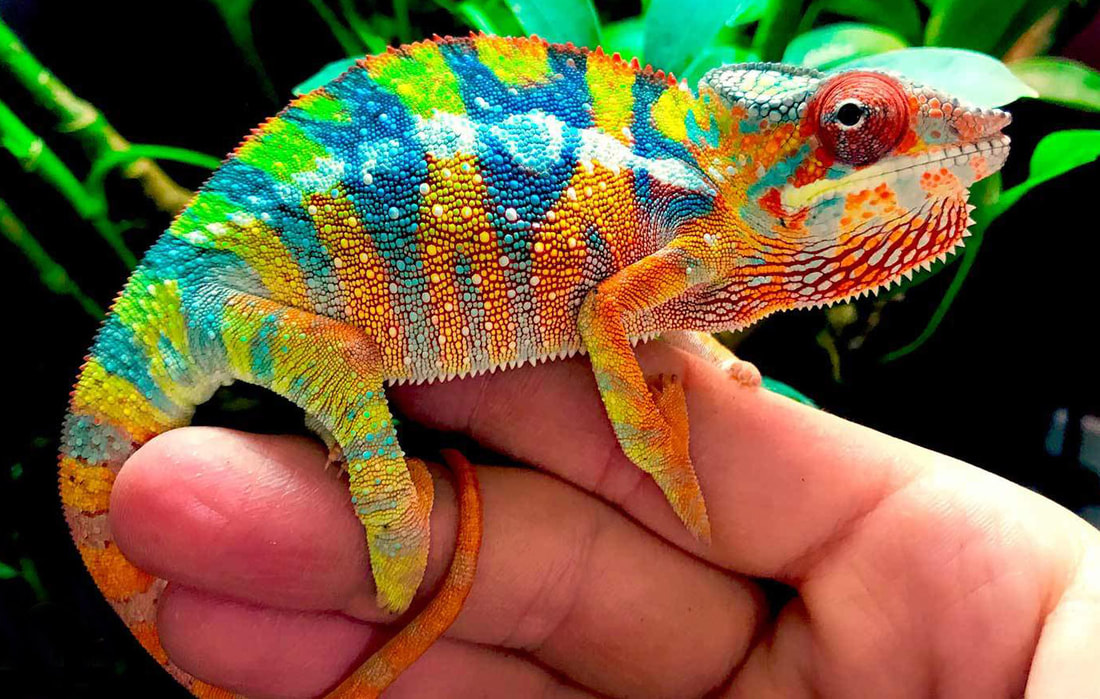Straight away this means that it s preferable not to house chameleons together with other chameleons and definitely not advised to house with any other species.
Carpet chameleon behavior.
Photo by bernard dupont.
Female carpet chameleon furcifer lateralis with a pattern that indicates that it s already pregnant and that it has no interest in mating.
Behavior this species as with most other chameleon species is strictly diurnal.
It is arboreal a tree dweller.
Adults require a 18 x 18 x 36 enclosure with branches.
Getting started with chameleons coursework which gives you a basic exposure to the important issues in chameleon husbandry.
Carpet chameleons are very prolific breeders.
Finally outside mating season all chameleons use their boldest colours during their encounters with rivals of their same species.
Behavior males can become territorial separate from other.
After reaching sexual maturity at the age of six months these chameleons can produce up to 20 eggs per clutch.
Chameleon behavior is a class that is part of the term 1.
General behavior as a whole chameleons have a number of behavioral characteristics which can be extremely important when seeking to understand them.
As long as no aggressive behavior is present a clutch of 10 to 15 hatchling carpet chameleons can be housed together in a screen cage measuring 1 foot long 1 foot wide and 2 feet tall for no more than a month.
Implications of chameleon behavior for captivity knowing that chameleons are generally shy and solitary will help you understand better how to care for them in captivity.
After they have reached the desired body temperature they begin hunting for prey an activity which usually lasts for the rest of the daylight hours.
Signs of mbd include stunted growth bent leg bones fractures double elbows or knees grabbing at its own legs or head decreased tongue usage a soft jaw and the mouth not aligning or closing all the way.
They generally spend the early part of the day warming up their bodies by assuming a very dark coloration and exposing as much surface area as possible to sunlight.
The hatch rates of this type of chameleon are very high as well and you can expect eggs to be laid every six to eight weeks.
Learning about chameleon mannerisms.





























